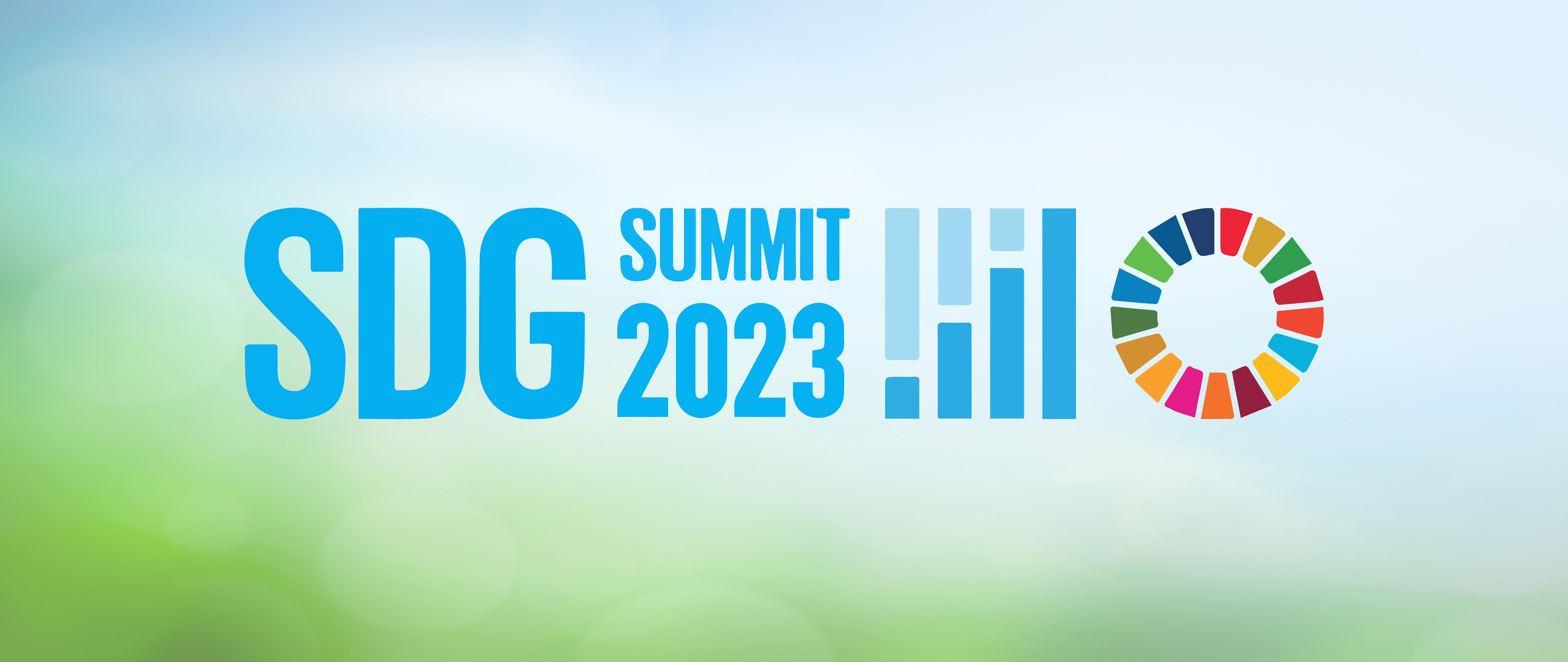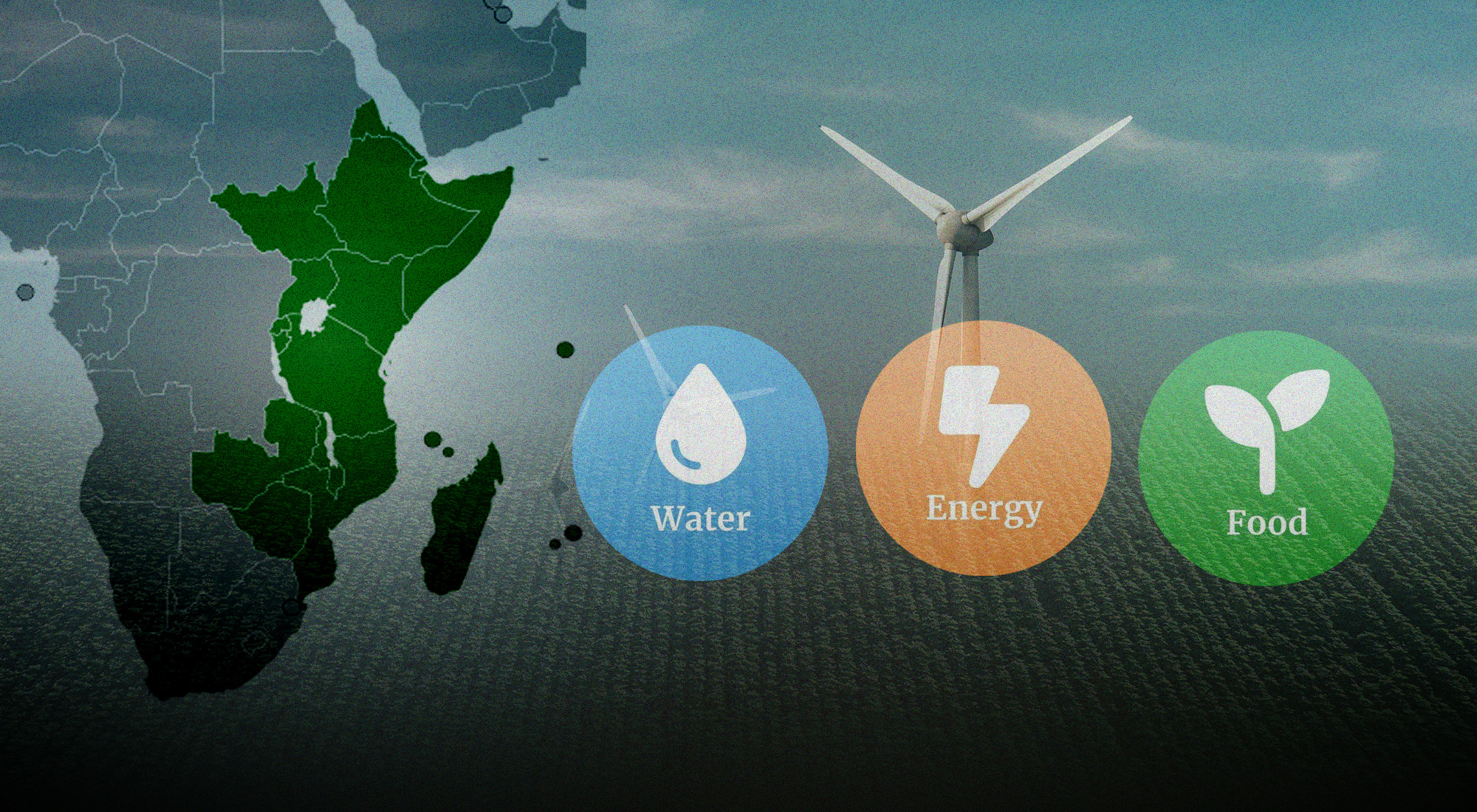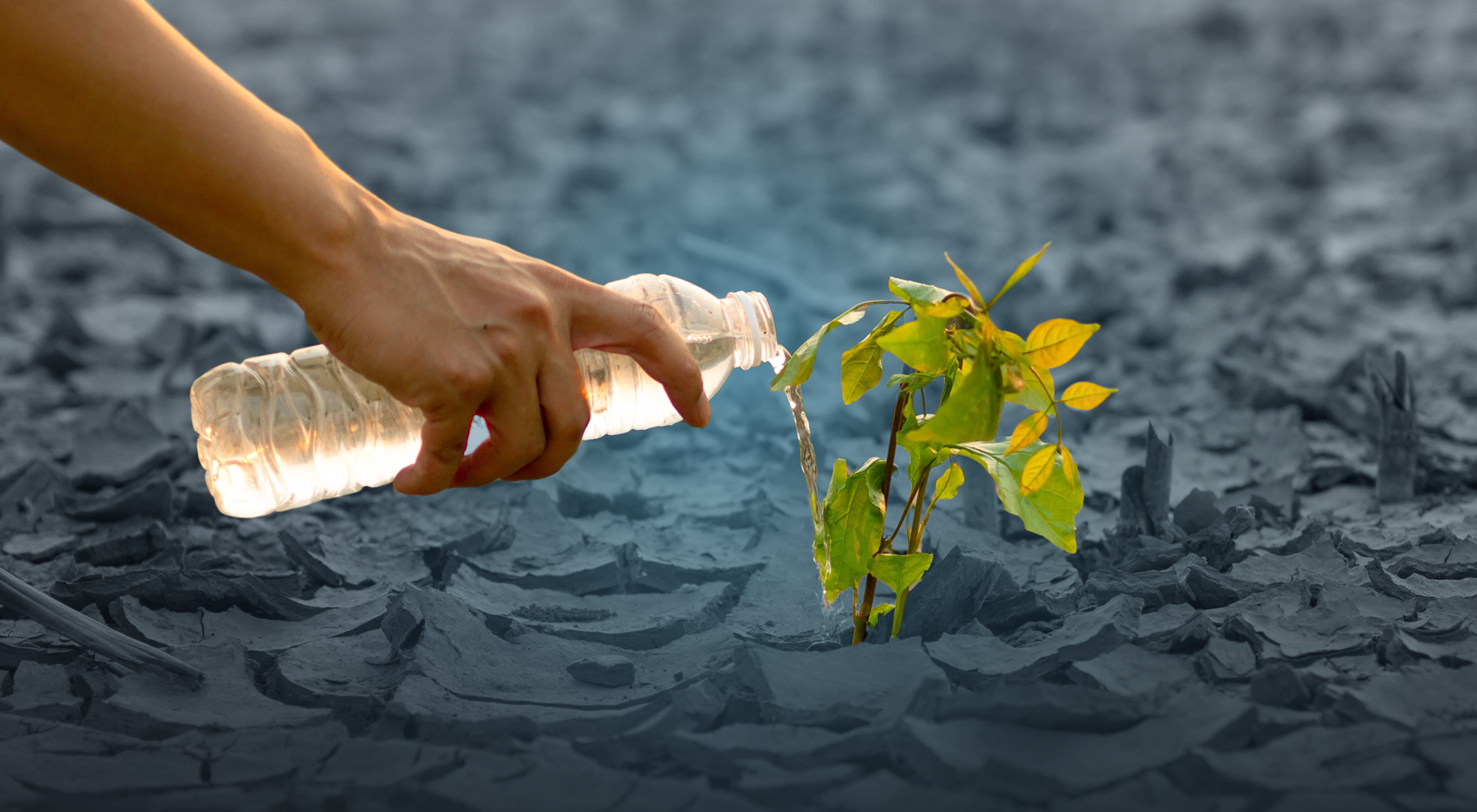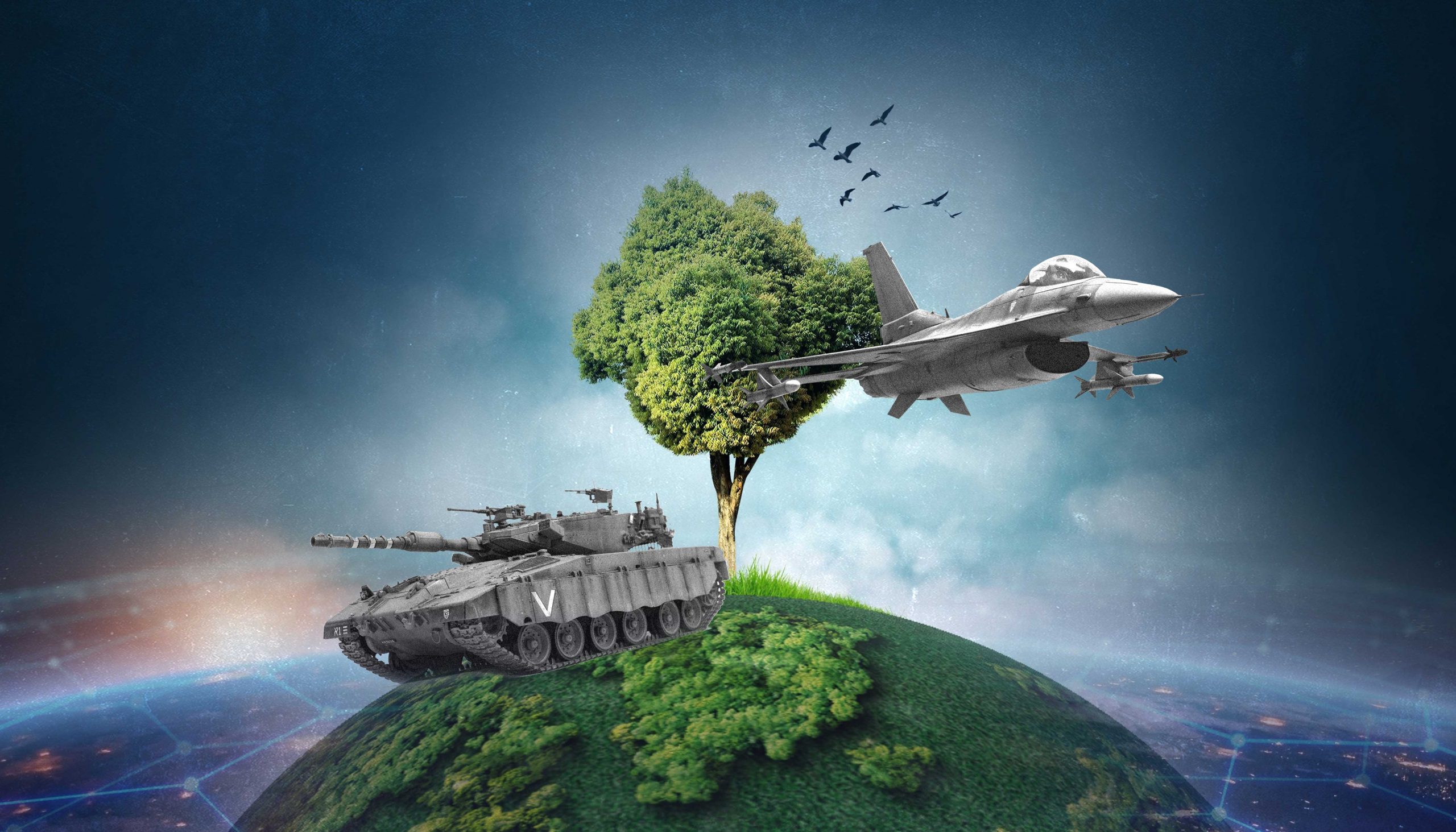The unfortunate reality of the current standing of the UN
Sustainable Development Goals (SDGs) paints a dreary picture: progress on more
than 50% of the 2030 Agenda’s Sustainable Development Goals has been
categorized by the United Nations as ‘weak’ or ‘insufficient,’ while 30% have
stagnated or regressed[1] altogether,
ultimately leaving a majority of the world’s poorest populations light years
behind the developed world.
The 2030 Agenda for Sustainable Development was adopted by the
United Nations General Assembly in September of 2015 in unison with the UN’s 70th
anniversary. Deemed as a plan of action for people, our planet, and collective
prosperity, the agenda’s preamble underscores that the eradication of poverty
remains the greatest global challenge of our time and is intrinsically tied to
successfully achieving sustainable development. Seventeen SDGs along with 169
targets were adopted as part of the 2030 Agenda, which called for a 15-year
timeframe to achieve its objectives. The
17 people-centric goals aim to achieve sustainable development in three main
areas: economic growth, social development, and preservation of the
environment.
The 2023 SDG Summit held during the United Nations General Assembly
in September will serve as a half-way point from the 2015 declaration to assess
progress and the implementation of the 2030 Agenda on Sustainable Development,
along with the 17 SDGs.
Established in 2012, the High-level Political Forum on Sustainable
Development (HLPF) was formed following the United Nations Conference on
Sustainable Development in Brazil, titled, “The Future We Want.” Conference
discussions resulted in the development of the ‘Outcome Document,’ which
highlighted clear and practical measures to address sustainable development
while advocating for a green economy. The text included broad, overarching
themes outlining objectives to eradicate poverty, tackle food security and the
promotion of sustainable agriculture, ensure access to sustainable modern
energy services, promote sustainable cities and transportation, urgently
address the health needs of the world’s population, and promote full and
productive employment for all.[2]
These objectives would later translate into the 17 SDGs, which seek
to address the world’s most urgent challenges, which, for the most part, are
all interrelated. Deemed by the United Nations as a “Universal Call to Action,”
the SDGs aim to ensure a better quality of life for people across the globe
while simultaneously protecting the environment.
The establishment of the HLPF aims to serve as the primary United
Nations platform concerning sustainable development. The HLPF meets annually in
July, assembling high-level government representatives and various stakeholders
to assess progress and obstacles while making recommendations to best achieve
the 2030 Agenda along with the SDGs. In July 2022, the HLPF called for the
September 2023 SDG Summit to “mark the beginning of a new phase of accelerated
actions leading up to the 2030 deadline for achieving the SDGs.”[3]
Government leaders, civil society members, women, youth, and interested
parties from the private sector converged at the recent SDG Summit for a series
of high-level meetings to conduct a comprehensive assessment of the SDGs’
current status while also responding to a series of cascading crises that are
affecting much of the world, such as poverty, hunger, and climate-related
issues. The summit aimed to provide policy recommendations to scale up and
mobilize further resources through multi-stakeholder collaborations to
accelerate the implementation of the SDGs.
The 2030 Agenda in Peril
The hallmark of the 2030 Agenda – to ensure no person across the
globe is left behind – currently remains in peril.[4] Deemed by the
United Nations as a poly-crisis era,[5] our world
today is currently experiencing a multitude of interlinked economic and social crises
that continue to hamper sustainable development progress, including
post-pandemic setbacks, the effects of ongoing conflict in Ukraine, and an
ever-present climate crisis.
A global post-pandemic reality
The lingering effects of the COVID-19 pandemic have resulted in an
increase in educational inequalities among an entire generation of school-aged
children who were faced with disruptions in learning as a result of school
closures. These lapses exacerbated pre-existing learning challenges, widened
achievement gaps, and were especially problematic for lower-income families who
lacked access to fast, reliable broadband. Out of 104 countries reviewed as
case studies throughout the pandemic, 4 out of 5 nations experienced learning
losses as a result of COVID-related school closures.[6]
Two-thirds of school-age students worldwide, equal to 1.3 billion
children aged 3 to 17 years old, did not have internet connections in their
homes by the end of 2020,[7] leaving
students incapable of participating in virtual learning and online socializing.
As the pandemic cast a harsh spotlight on the current digital divide, today’s
rapid advancements in digitization should serve as a driver to meet the goals
of SDG9 – Industry, Innovation, and Infrastructure, which include increasing
mobile broadband access.[8]
Following a return to in-person learning in 2022 for most students,
American educators discovered reading scores for 9-year-olds had plummeted to
their lowest levels in nearly three decades, while math scores fell seven
points from 2020 to 2022.[9] Countries in
South Asia, including India, Bangladesh, Pakistan, and Afghanistan, implemented
the longest pandemic-induced school closures globally, nearly 84 weeks in
total. As a result, the South Asian nations experienced the largest learning
delays world-wide, equivalent to 12.4 months.[10]
These extended learning setbacks are expected to have a
trickle-down effect on the global economy. For children in grades 1 to 12,
school closures may result in nearly a 3% lower income over their entire
lifespan, according to research conducted by the Organization for Economic Co-operation
and Development (OECD) during the onset of the pandemic. Likewise, the OECD
determined in their 2020 study, which analyzed the economic impacts of learning
losses as a result of pandemic-induced school closures, that nations may “yield
an average of 1.5% lower annual GDP for the remainder of the century.”[11]
Of all the sustainable goals, SDG 4 – Quality Education,
which aims to ensure children and young adults receive inclusive and equitable
quality education and promotes lifelong learning opportunities for all,[12] remains the
clearest path to overcome barriers of inequality. Access to education is not
only a basic human right but also an enabler for sustainable development
progress. In a rapidly changing world, quality education remains central to the
ability of today’s youth to adapt to and transform our world for the better.
The far-reaching impacts of the war in Ukraine
By the end of 2022, global conflict had resulted in more than 108
million people worldwide being forcibly displaced from their homes – that’s more
than two-and-a-half times as compared to a decade ago.[13] SDG 16
– Peace, Justice, and Strong Institutions, which designates peaceful and
inclusive societies as indispensable parameters to achieving sustainable
development, remains in jeopardy so long as the conflict in Ukraine, along with
many other crises worldwide, continues to undermine citizens’ rights to live a
free and prosperous life.
As a result of the prolonged war in Ukraine, the correlation
between disruptions in food and energy supply chains and their effect on the
global economy has continued to undermine the global outlook as the world
attempts to rebound post-pandemic.
An estimated 6.7 million Ukrainians have fled the country since the
onset of conflict, according to recent statistics published by the Center for
Economic Strategy (CES),[14] equal to 8% of
its pre-war population. Many asylum seekers, mainly young mothers, aim to
establish new lives outside Ukraine, seeking a better life for their children
as the uncertainty of the dire reality at home remains too much to bear. Such
decisions could eventually undermine rebuilding efforts for Ukraine once the
war is over. According to the CES report, refugees remaining abroad
indefinitely could have significant impacts on the economy, with losses expected
between 2.7% and 6.9% of GDP annually.
However, the crisis in Ukraine has also had far-reaching impacts
well beyond its borders. Rising food and energy costs as a result of western
sanctions on Russia and the Russian blockades in the Black Sea – the main point
of transit for the export of Eastern European grains – slowed economic growth
worldwide while simultaneously driving up global inflation.[15] Such factors forced federal governments to
fight inflation through a series of interest rate hikes,[16] leading to a
global cost of living crisis.[17]
Both the peripheral impacts of war in Ukraine and across the globe
run the risk of undermining sustainable development, which at its core is
intrinsically tied to peace, stability, the protection of human rights, and
effective and transparent governance.
The climate crisis upon us
The recently published synthesis report by the United Nations
concerning the technical dialogue of the first global stocktake offered a
sobering analysis of the world’s climate efforts since the adoption of the
Paris Accords in 2015. The report underscored a potentially bleak future,
stating there remains a “rapidly closing window of opportunity to secure a
livable and sustainable future for all” – ‘livable’ being the trigger word that
should put world leaders on notice. The era of delay and inaction is over.
Key findings in the report detailed that in order to successfully
achieve sustainable development, world governments need to support system
transformations that conventionalize climate resilience and low GHG emissions
development.[18] The report
also noted that bridging gaps in key areas can help ease the barriers to
implementing the Paris Accords. Proposals include increasing international
cooperation, advancing credible initiatives that highlight an “all of economy,
all of society” approach across all systems and sectors, and increasing climate
financing.
Climate change and sustainable development
There is an indisputable link between climate change and achieving
sustainable development. Recent globally
rising temperatures, increased flooding, and extended droughts can all have
severe impacts on basic human needs, as outlined by the Universal Declaration
of Human Rights from 1948. The milestone document described as the ‘international
Magna Carta for all mankind’[19] outlines in
Article 25:
“Everyone has the right to a
standard of living adequate for the health and well-being of himself and of his
family, including food, clothing, housing and medical care and necessary social
services, and the right to security in the event of unemployment, sickness,
disability, widowhood, old age or other lack of livelihood in circumstances
beyond his control.”[20]
The UN Refugee Agency (UNHCR) estimates that
as a result of recent extreme weather patterns, which are undeniably beyond the
control of many of the world’s poorest nations, more than 20 million people will
be forced to leave their homes each year.[21] Similarly,
climate-fueled crises too often take an adverse toll on access to clean drinking
water while simultaneously undermining agriculture productivity which can
jeopardize global food security.
Likewise, the physical toll of climate change on the built
environment can undermine the integrity of infrastructure such as coastal
housing and businesses, grain storage facilities and shipping ports, increasing
budget costs for underdeveloped and developing nations. Such expenditures can
impact local economies and have repercussions on global supply chains.[22]
1.5°C threshold in crisis
Dubbed by the UN as an era “standing on the brink of calamity,”
global warming is expected to exceed the 1.5°C threshold by 2035 and faces a
2.5°C increase in warming by the year 2100[23] if efforts to
tackle climate change remain at their current pace.
To put into perspective what a 2.0°C increase in global warming
could signify for the earth as we know it, sea level rises could increase by
0.66 feet (0.2 meters), resulting in increased flooding of nearly 70% of the
earth’s coastlines.[24] In the last decade alone, the rate of sea
level rise has already doubled.[25] Conversely,
subtropic regions, including large areas encompassing Latin America, Africa,
the Middle East, and India are expected to lose one-third of their fresh water
sources, only to further intensify and elongate heat waves, jeopardizing food
security and overall human health and wellbeing.
For life below the water, also known as SDG 14, a 2°C
increase in global temperatures would be even more dire. Ocean warming and
acidification could result in a nearly 99% loss of the world’s coral reefs.[26] In addition to
supporting nearly a quarter of all marine species, healthy coral reefs are also
important for coastal communities as they act as a barrier for coastlines
during storms, reducing wave impacts on shore.[27]
The urgency of COP28 in providing immediate solutions – and funding
SDG 13- Take Urgent Action to Combat Climate Change and its Impacts, remains a top
priority, particularly as we approach the upcoming 28th edition of
the United Nations Climate Change Conference, commonly referred to as COP28, to
be held in Dubai, United Arab Emirates, later this year. The COP28 leadership,
led by Dr. Sultan Ahmed Al Jaber, President-Designate for COP28, is aiming to
encourage real-world solutions to close the missing gaps to ensure Agenda 2030
meets its aims. Dr. Al Jaber recently urged global governments, industry, and
stakeholders to “disrupt business as usual,” noting the incremental steps taken
so far to tackle climate change have not met the “urgency of the moment.”[28]
The COP28 will be the first United Nations climate conference to
conduct a Global Stocktake of the implementation of the Paris Agreement. The
decisions to be taken following this comprehensive review of what countries
have done to prevent the earth’s tipping point will also serve as an
accelerated roadmap to meet the objectives of the 2030 Agenda for Sustainable
Development and the SDGs.
SDG Progress – a path for hope
While the world around us appears somber in many respects, it’s
important to highlight the SDG progress that has been made and to build upon
those achievements; otherwise, according to UN Secretary-General António
Guterres, “the 2030 Agenda will become an epitaph for a world that might have
been.”[29]
SDG 3 – Good Health and Well Being has made
substantial headway in reducing child mortality rates, particularly Target
3.2, which calls for ending preventable deaths of newborns and children
under 5 years of age by 2030. Out of 200 countries analyzed, 146 have already
met or are on track to meet the under-5 mortality target. According to the
World Health Organization (WHO), child mortality rates can be further decreased
if expectant and new mothers, along with their children, are provided with
access to basic lifesaving interventions, including skilled midwives present
during childbirth, both postnatal care and pediatric treatment for common
childhood diseases, and improved accessibility to childhood vaccinations.[30]
Likewise, similar achievements have been made in the field of HIV
treatments, which has led to a decrease in global AIDS-related deaths by 52%
since 2010.[31] Such
substantial progress is linked to SDG Target 3.3, which calls to end the
epidemics of AIDS, tuberculosis, malaria and neglected tropical diseases and
combat hepatitis, waterborne diseases and other communicable diseases by 2030.
As a result of prevention in the form of outreach, education, and awareness
campaigns, paired with medical breakthroughs in antiretroviral therapy, living
with HIV has become a manageable chronic health condition, allowing those
diagnosed to continue living healthy and longer lives.[32]
Expedient measures to eradicate Hepatitis B have also been
successful, with a 90% reduction in new infections across the European Union.[33] Efforts to
vaccinate infants across Africa are also improving. In 2019, the 47
member-states of the WHO African Region (AFR) accounted for nearly 66% of all
new chronic hepatitis B virus (HBV) infections. By 2021, all 47 AFR members had
successfully administered a 3 dose-regimen of the hepatitis B vaccine to
infants.[34]
In addition to the progress on global health, the world has also
become a little ‘brighter’ for hundreds of millions of people worldwide. From
2015 to 2021, 800 million people globally gained access to electricity, equal
to 91% of the population.[35]
Electrification for the world’s neediest has improved the quality of life in a
myriad of ways. Increased access to electricity, particularly in underdeveloped
regions, helps to bridge inequalities and create more inclusive communities that
are then able to further contribute to the global economy.
Besides providing increased basic comfort for households and
broader access to online information, including educational opportunities,
electrification improves the quality of healthcare services and facilities.
Refrigerated vaccines and medicines can be more easily administered, and
healthcare providers are better able to screen patients through the use of
x-ray machines and other critical imaging procedures, including ultrasounds and
mammograms, providing a substantially better quality of life to entire
communities.
A Rescue Plan for People and Planet
As progress towards Agenda 2030 reaches its mid-way point, ensuring
an equitable and sustainable future for all will undoubtedly remain an uphill
battle. Currently, 1.1 billion people, approximately 18% of the global
population, live in acute multidimensional poverty across 110 countries,[36]
while nearly 680 million people, equal to 8% of the population, will be facing
hunger by the end of this decade.[37]
Likewise, at the current rate, estimates predict it will take 140 years to
achieve gender parity in managerial positions.[38]
Addressing the High-Level Political Forum during Day 1 of the SDG Summit, UN
Secretary-General António Guterres pleaded with world leaders, stating,
“Instead of leaving no one behind, we risk leaving the SDGs behind. . .the SDGs
need a global rescue plan.”[39]
Global leaders in attendance adopted a sweeping 10-page Political Declaration,
reaffirming their commitment to end poverty and hunger across the globe, combat
inequalities, and help develop and sustain just and inclusive societies. Taking
into consideration that a lack of sufficient funding remains central to most
development crises, the Political Declaration specified the urgency of
reforming the current “outdated, dysfunctional and unfair international
financial architecture” to further mobilize SDG aims and allow for the ability
to respond to urgent global needs, along with those on the horizon. With only
15% of the SDGs on track as we approach 2030, scaling up financing for
sustainable development is vital. As a result, the Political Declaration reiterated
members support in providing a stimulus of $500 billion annually, which
Guterres labeled as a “game-changer” to fast-track SDG progress.[40]
During the Day 1 Planetary Segment meeting, Azali Assoumani,
President of Comoros, who spoke as Chairperson for the African Union (AU),
noted that the trajectory of achieving the SDGs has been hindered due to a
multitude of global crises, including the continuing effects of COVID-19, the
war in Ukraine, and the current climate crisis. Yet despite the fact that even
before the pandemic, Africa maintained positive growth rates, such progress
remained insufficient to achieve its SDG targets. President Assoumani added
that the successful implementation of the SDGs will depend on the availability
of resources allocated to mobilize efforts, calling for “brave policies,
targeted investments, and concerted action to transform aspirations into
tangible results.”[41]
Likewise, during the Leaders Dialogue 1: Scaling up Actions to
Accelerate SDG Progress meeting, Peter Pavel, President of the Czech
Republic, who spoke on behalf of Pathfinders for Peace, Just, and Inclusive
Societies, reminded his fellow leaders that there is “no better blueprint” for
achieving peace and prosperity than the 2030 Agenda and ‘no greater catalyst’
than SDG 16 – Peace Justice and
Strong Institutions, adding the critical importance of restoring the social
contract between a government and its people.
In order to make the next seven years truly count, a systematic
shift must occur in commitments to bridge the gaps in financing for vulnerable
and developing countries, along with increased multilateral and global
partnerships to accelerate joint SDG action by 2030. Acknowledging that climate
change remains one of the greatest threats to humanity, the adverse effects of
global warming disproportionately impact developing, vulnerable countries,
through no fault of their own.
For instance, Africa contributes the least to global greenhouse gas emissions yet remains the most vulnerable continent to climate change impacts.[42] The declaration added that mitigation and adaptation efforts represent an “immediate and urgent priority’ paving the way for COP28 to solidify financial, technical and capacity-building support gaps. If left unchecked, the physical and environmental burdens of climate change will continue to undermine the minimal gains achieved in sustainable development progress and seriously obstruct further SDG advancement.
[1] “The Sustainable Development Goals Report 2023: Special Edition,”
United Nations, date retrieved September 5, 2023, https://unstats.un.org/sdgs/report/2023/.
[2] “Future We Want – Outcome document,” June 2022, United Nations, https://sustainabledevelopment.un.org/index.php?menu=1298.
[3] “2023 SDG Summit,” United Nations, date retrieved September 5,
2023, https://www.un.org/en/conferences/SDGSummit2023.
[4] “Transformative Actions,” United Nations SDG Summit 2023, date
retrieved September 11, 2023, https://www.un.org/en/sdg-summit-2023/page/transformative-action.
[5] “Global crises further threaten progress on SDGs: ADB-UN report,”
United Nations Development Program, March 27, 2023, https://www.undp.org/asia-pacific/press-releases/global-crises-further-threaten-progress-sdgs-adb-un-report.
[6] “Where are we on education recovery?,” United Nations Children’s
Fund (UNICEF), 2022, https://www.unicef.org/lac/media/32546/file/Where-are-we-in-education-recovery.pdf.
[7] “Two thirds of the world’s school-age children have no internet
access at home, new UNICEF-ITU report says,” UNICEF, November 30, 2020, https://www.unicef.org/press-releases/two-thirds-worlds-school-age-children-have-no-internet-access-home-new-unicef-itu#:~:text=Put%20bluntly%3A%20Lack%20of%20internet,can%20be%20out%20of%20reach.
[8] “Goal 9: Build resilient infrastructure, promote sustainable
industrialization and foster innovation,” United Nations Sustainable
Development Goals, date retrieved September 13, 2023, https://www.un.org/sustainabledevelopment/infrastructure-industrialization/.
[9] Collin Binkley, “Reading, math scores fell sharply during pandemic,
data show,” Associated Press, September 2, 2022, https://apnews.com/article/covid-science-health-race-and-ethnicity-education-4d02ce3fe0fe432efc68373ee961c5bb.
[10] Jake Bryant, Felipe Child, Emma Dorn, Jose Espinosa, Stephen Hall,
Topsy Kola-Oyeneyin, Cheryl Lim, Frédéric Panier, Jimmy Sarakatsannis, Dirk
Schmautzer, Seckin Ungur, and Bart Woord,
“How COVID-19 caused a global learning crisis,” McKinsey &
Company, April 4, 2022, https://www.mckinsey.com/industries/education/our-insights/how-covid-19-caused-a-global-learning-crisis.
[11] Eric A. Hanushek and Ludger Woessmann, “The Economic Impacts of
Learning Losses,” Organization for
Economic Co-Operation and Development (OECD), September 2020, https://www.oecd.org/education/The-economic-impacts-of-coronavirus-covid-19-learning-losses.pdf.
[12] “Goal 4,” United Nations Department of Economic and Social
Affairs, Sustainable Development, date retrieved September 13, 2023, https://sdgs.un.org/goals/goal4.
[13] “Peace, justice and strong institutions,” United Nations,
Department of Economic and Social Affairs, date retrieved September 12,
2023, https://unstats.un.org/sdgs/report/2023/Goal-16/.
[14] Hlib Vyshlinsky, Maksym Samoiliuk, Dariia Mykhailyshyna, and Maria
Tomilina, “Ukrainian refugees: how many
are there, their intentions & return prospects,” Center for Economic
Strategy, September 4, 2023, https://ces.org.ua/en/refugees-from-ukraine-final-report/.
[15] Alfred Kammer, Jihad Azour, Abebe Aemro Selassie, Ilan Goldfajn, Chang
Yong Rhee. “How War in Ukraine Is Reverberating Across World’s Regions,” International
Monetary Fund, March 15, 2022, https://www.imf.org/en/Blogs/Articles/2022/03/15/blog-how-war-in-ukraine-is-reverberating-across-worlds-regions-031522.
[16] Liliana Rojas-Suarez and Alejandro Fiorito, “The Ukrainian War and
the Fed’s Interest Rate Hikes: A Double Whammy for Emerging Markets and
Developing Economies?,” Center for Global Development, March 29,
2022, https://www.cgdev.org/publication/ukrainian-war-and-feds-interest-rate-hikes-double-whammy-emerging-markets-and.
[17] “The Sustainable Development Goals Report 2023: Special Edition,” United
Nations, date retrieved September 5, 2023, https://unstats.un.org/sdgs/report/2023/.
[18] “Technical dialogue of the first global stocktake,” United
Nations Framework Convention on Climate Change, September 8, 2023, https://unfccc.int/sites/default/files/resource/sb2023_09_adv.pdf.
[19] ““My Most Important Task” Eleanor Roosevelt and the Universal
Declaration of Human Rights,” Roosevelt House, Public Policy Institute at
Hunter College, date retrieved September 18, 2023, http://www.roosevelthouse.hunter.cuny.edu/exhibits/my-most-important-task/.
[20] “Universal Declaration of Human Rights,” United Nations,
date retrieved September 18, 2023, https://www.un.org/en/about-us/universal-declaration-of-human-rights.
[21] “Climate change and disaster displacement,” The UN Refugee
Agency (UNHCR), date retrieved September 18, 2023, https://www.unhcr.org/what-we-do/build-better-futures/environment-disasters-and-climate-change/climate-change-and.
[22] Jonathan Woetzel, Dickon Pinner, Hamid Samandari, Hauke Engel,
Mekala Krishnan, Claudia Kampel, and Jakob Graabak, “Could climate become the
weak link in your supply chain?,” McKinsey & Company, April 6,
2020, https://www.mckinsey.com/capabilities/sustainability/our-insights/could-climate-become-the-weak-link-in-your-supply-chain.
[23] “Goal 13,” United Nations Department of Economic and Social
Affairs Sustainable Development, date retrieved September 14, 2023, https://sdgs.un.org/goals/goal13.
[24] Alan Buis, “A Degree of
Concern: Why Global Temperatures Matter,” NASA, June 19, 2019, https://climate.nasa.gov/news/2865/a-degree-of-concern-why-global-temperatures-matter/.
[25] “The Sustainable Development Goals Report 2023: Special Edition,” United
Nations, date retrieved September 5, 2023, https://unstats.un.org/sdgs/report/2023/.
[26] Kate Abnett, “Explainer: What’s the difference between 1.5°C and
2°C of global warming?” Reuters, November 9,
2021, https://www.reuters.com/business/cop/whats-difference-between-15c-2c-global-warming-2021-11-07/.
[27] “Coral reef ecosystems,” National Oceanic and Atmospheric
Administration, date retrieved September 18, 2023, https://www.noaa.gov/education/resource-collections/marine-life/coral-reef-ecosystems#:~:text=Coral%20reefs%20protect%20coastlines%20from,food%2C%20income%2C%20and%20protection.
[28] “COP 28 President-Designate Sultan Al Jaber calls on stakeholders
to ‘disrupt business as usual,” Gulf News, July 14, 2023, https://gulfnews.com/uae/government/cop-28-president-designate-sultan-al-jaber-calls-on-stakeholders-to-disrupt-business-as-usual-1.1689330798411#.
[29] “The Sustainable Development Goals Report 2023: Special Edition,”
United Nations, date retrieved September 5, 2023, https://unstats.un.org/sdgs/report/2023/.
[30] “SDG Target 3.2: End preventable deaths of newborns and children
under 5 years of age,” World Health Organization: The Global Health
Observatory, date retrieved September 14, 2023, https://www.who.int/data/gho/data/themes/topics/sdg-target-3_2-newborn-and-child-mortality.
[31] “3 Good Health and Wellbeing,” United Nations Sustainable
Development Goals, date retrieved September 15, 2023, https://www.un.org/sustainabledevelopment/health/#:~:text=146%20out%20of%20200%20countries,been%20eliminated%20in%2047%20countries.
[32] “HIV and AIDS,” World Health Organization (WHO), July 13,
2023, https://www.who.int/news-room/fact-sheets/detail/hiv-aids.
[33] “Health Security Committee: Draft Summary Report,” European
Commission
Directorate-General for Health and
Food Safety, November 30, 2022, https://health.ec.europa.eu/system/files/2022-12/security_ev_20221130_sr_en.pdf.
[34] Kabore HJ, Li X, Alleman MM, Manzengo CM, Mumba M, Biey J, Paluku
G, Bwaka AM, Impouma B, Tohme RA, “Progress Toward Hepatitis B Control and
Elimination of Mother-to-Child Transmission of Hepatitis B Virus,” World
Health Organization African Region, July 21, 2023, https://www.ncbi.nlm.nih.gov/pmc/articles/PMC10360654/.
[35] “9: Affordable and clean energy,” United Nations Sustainable
Development Goals, date retrieved September 15, 2023, https://unstats.un.org/sdgs/report/2023/Goal-07/#:~:text=The%20global%20electricity%20access%20rate,2021%2C%20mostly%20located%20in%20LDCs.
[36] “25 Countries Halved Multidimensional Poverty Within 15 Years, but
1.1 Billion Remain Poor,” UN Development Programme and the University of
Oxford, July 11, 2023, https://www.undp.org/sites/g/files/zskgke326/files/2023-07/2023%20MPI%20press%20release_EN.pdf.
[37] “UN Report: Global hunger numbers rose to as many as 828 million in
2021,” Food and Agricultural Organization of the United Nations, July 6, 2022, https://www.fao.org/newsroom/detail/un-report-global-hunger-SOFI-2022-FAO/en.
[38] “SDG 5 – Gender Equality,” United Nations, date retrieved
September 20, 2023, https://unstats.un.org/sdgs/report/2023/Goal-05/#:~:text=Progress%20on%20increasing%20women’s%20representation,gender%20parity%20in%20managerial%20positions.
[39] “Sustainable Development Goals Require Global Rescue Plan,
Secretary-General Tells Political Forum, Hailing Effort to Improve Developing
Nations’ Access to Finance,” United Nations, September 18, 2023, https://press.un.org/en/2023/sgsm21945.doc.htm.
[40] “World Leaders Adopt Sweeping Political Declaration Reaffirming
Commitment to Achieve Sustainable Development Goals, as Summit Commences,” United
Nations, September 18, 2023, https://press.un.org/en/2023/ga12529.doc.htm#:~:text=Kicking%20off%20the%20second%20half,build%20peaceful%20societies%20that%20leave.
[41] Ibid.
[42] “Climate Change in Africa,” African Development Bank Group,
date retrieved September 22, 2023, https://www.afdb.org/en/cop25/climate-change-africa.










